31 Days, 31 Lists: 2023 Math Books for Kids

I no longer serve on the Mathical Book Prize committee (“an annual award for fiction and nonfiction books that inspire children of all ages to see math in the world around them”) and that is okay. It’s okay because I have retained my love and respect for children’s books capable of taking subject matter that many authors, and some illustrators, fear, turning it into something to be enjoyed. If you were to compare this year’s list with the first that I ever did on this site (2016) you’d see how the number of titles has just ballooned over the years. And as interest has grown, so too has the creativity and talent. Today we’re talking unapologetically about math math math! Get it while it’s hot!
You can find a PDF of today’s list here.
2023 Math Books for Kids
A Beautiful House for Birds by Grace Lin
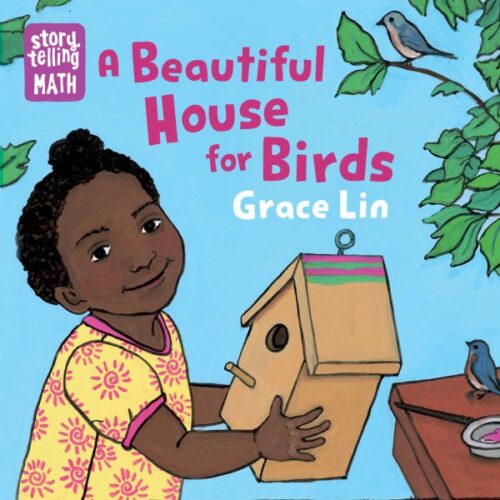
A math board book sounds, on the outset, impossible. Or, at the very least, improbable. That is, until you realize that math has roots in some of the fundamental activities kids play with all the time. It’s always pleased me inordinately that Grace Lin gets this fact. Over the years she’s been contributing to Charlesbridge’s “Story-Telling Math” board book series, highlighting a variety of different concepts. I like some more than others, and I happen to like this one very much. The concept being highlighted here is “Patterns”. I love how such a simple storyline about painting pink and green lines in succession on a birdhouse roof, interrupted by an unexpected blue line, leads the young heroine to realize that this mistake can actually become a part of the pattern too. Exceedingly clever how Lin has figured out how to make something this smart for such a young audience. The words are never too complicated, and it makes a great point not simply about pattern recognition but also extending already existing patterns into something new. Previously Seen On: The Board Books List
ADVERTISEMENT
ADVERTISEMENT
The Brilliant Calculator: How Mathematician Edith Clarke Helped Electrify America by Jan Lower, ill. Susan Reagan
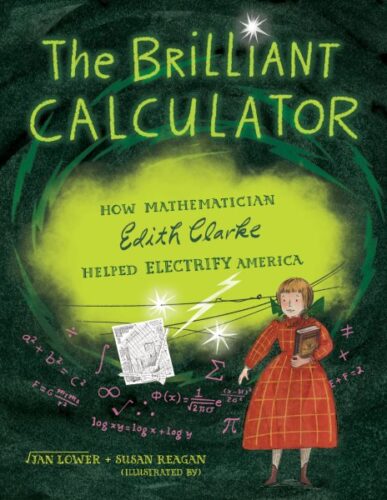
Oh, me oh my, I DO so love a good picture book biography when it has something to do with math. And as I mentioned before, over the last 10 or so odd years there’s been a notable uptick in the marketplace. I wonder, though, if you were to look at which publishers create such books, would the same names come up time and again? For example, the Calkins Creek imprint appears to be better suited to publishing a book of this sort. Why do I say such things? Because when I read a book like The Brilliant Calculator about Edith Clarke I notice several smart choices throughout. Fake dialogue? Not present. Is the story itself more fun than the backmatter? You betcha. Plus this is a smart duo of author and artist to pair together. Lower’s A Song for the Cosmos: Blind Willie Johnson and Voyager’s Golden Record was an accurate but dreamy take on its subject matter, while Reagan’s work on Revolutionary Prudence Wright elevated a book that might not have gotten attention otherwise. Here they have to prove their mettle in one specific way: Are they afraid of numbers? I’m not kidding about this. Many is the mathematician bio that eschews almost any mention of actual math (check out the bulk of books on Katherine Johnson if you don’t believe me). Ms. Reagan does include math in the details of the art, though the equations reminded me of the year I served on the Mathical Prize committee and the mathematicians there started trying to solve the math in the art that they found in such borders. But with her accurate rendition of the Clarke Calculator patent, I am certain everything checks out. Great writing, an interesting person to learn about, and some truly awesome art. A winner!
Counting on Naamah by Erica Lyons, ill. Mary Reaves Uhles
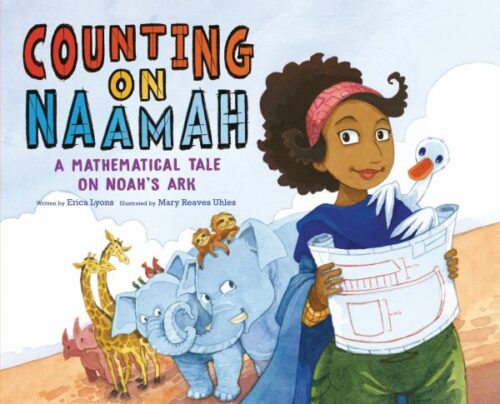
Ah! Another book for the Why Hasn’t Someone Thought of This Before category! To start of with, why hasn’t anyone turned the Noah’s Ark story into a math picture book before? Of all the tales in the Jewish or Christian religions, this one seems the most math friendly (though if Lyons and Uhles want to make a sequel, the loaves and fishes story might be a possibility). Best of all, Lyons gives the role of mathematician to Naamah, Noah’s wife. All kinds of different types of math are worked into the storyline, and the construction of the ark itself manages to teach and not bore. My sole objection? Well, aside from the fact that Naamah’s kids and their spouses somehow disappeared in the course of all this, there is the inescapable fact that this book would have been ripe for wonderful backmatter, and yet all we get are teeny tiny boxes on what a midrash is and who Naamah was. Such a lost opportunity! Lyons could have filled two additional pages with wonderful explanations of some of Naamah’s math, and even included little activities for kids to do. Ah well. As it stands, it’s a pretty darn good combination of classic tale and mathical mathiness.
Friend of Numbers: The Life of Mathematician Srinivasa Ramanujan by Priya Narayanan, ill. Satwik Gade
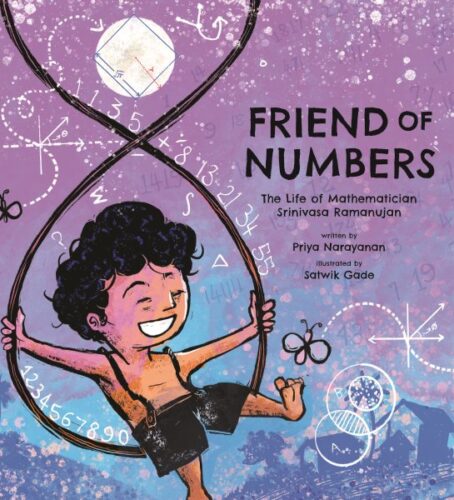
Every single picture book biography out there is a challenge in an entirely different way. The author of such a book must determine the best possible way in which to introduce their subject without going the rote, “Mr. [Blank] was born on [Blank] in the country of [Blank].” You see what I’m getting at. Now add in an additional terrifying factor: Math. Math complicates things for authors. Very few children’s book creators have degrees in it. Many retain fears of it dating back to their own school age years. So when some of them write picture book bios of mathematicians they try to avoid the math in any way that they can. They may, for example, lean heavily on the illustrator to put numbers, charts, and graphs in the art (though, as I mentioned before, I’ve been with mathematicians who have looked at these art pieces and said, “This is just gobblety-gook!”). So one of the differences with Friend of Numbers is the the fact that not only does Priya Narayanan have a good grasp on how to tell the story of Srinivasa Ramanujan, but she also isn’t afraid to put math into the text itself. I was reminded of The Boy Who Loved Math by Deborah Heiligman, another book that understood innately how not to shy away from numbers. Satwik Gade’s art is just as enticing, and I was delighted to discover that this edition we’re seeing here in America is a reprint of a book that originally came out in India. In the front it says, “The author’s note, glossary, and mathematical content were created in collaboration with the author for the Eerdmans edition of this book.” You know what that means, don’t you? In other countries there isn’t a focus on backmatter, but here in the States we rather insist on it. And this book’s backmatter is INCREDIBLE! From the Author’s Note to different types of patterns that kids can practice on their own to a Glossary, this book is one of the best math-related titles for kids I’ve seen in a long long time. A glorious example for other publishers importing nonfiction from overseas.
Friends Beyond Measure: A Story Told with Infographics by Lalena Fisher
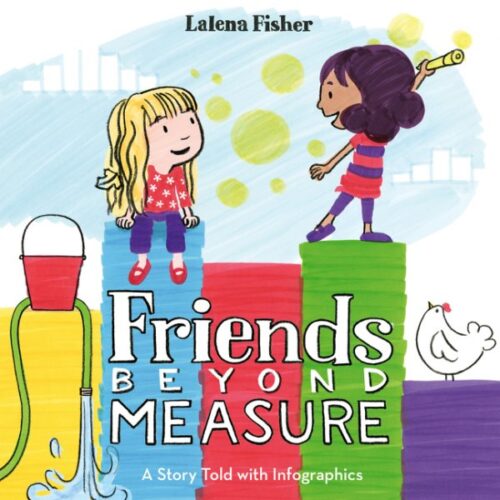
Ana and Harwin are best friends for all time, but when Harwin’s family plans to move away will they survive the split? A clever, funny, and touching tale told in graphs, charts, hugs, and tears. With the given understanding that infographics are, almost by definition, more interesting to adults than they are to kids, I still think that this book does a stand up and cheer job of integrating the darn things into the storyline. Told with a healthy dollop of humor, the story literally charts the friendship of two girls who have a couple things, if not everything, in common (a Venn diagram shows this right from the start). I like how the charts begin as friendly but when Harwin is due to move away they take on a darker tone. Teachers are gonna go gaga for this one too (particularly when they check out the list of charts in the backmatter).
How to Count to 1 by Caspar Salmon, ill. Matt Hunt
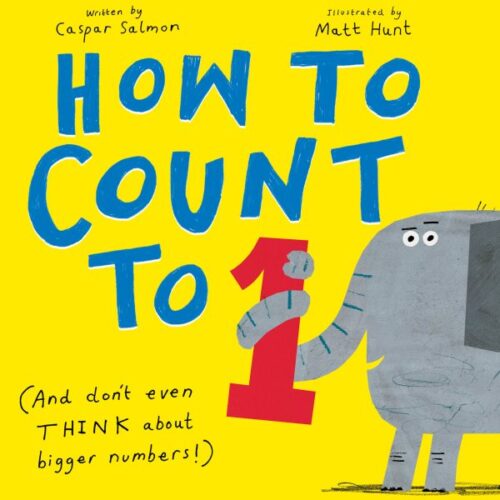
Ah, the old reverse psychology picture book. Love the format. So this little British import essentially forbids kids from engaging in counting for fun which, naturally, will make them want to do it all the more. We talk a lot about how to make math engaging for children but did we ever consider trying to prevent it from happening? I think this is a mildly brilliant solution. The intrusive narrator of this book is going to be very clear with you. You are only allowed to count a single thing on each of these pages. But as the book goes on you start to see a numerically increasing number of objects with a teeny tiny single thing that’s the only thing you are instructed to count. Play your cards right and you, the adult reader, can be the one trying to prevent your kids from counting. Which, in and of itself, is fairly hilarious. It’s sort of the old The Monster at the End of This Book technique (you know, where Grover begs you not to keep turning the pages) but with addition. And the last two pages are full of 100 things, so if they’ve gotten bitten by the counting bug, they’ll know how to use those skills. Previously Seen On: The Funny List
I Want 100 Dogs by Stacy McAnulty, ill. Claire Keane
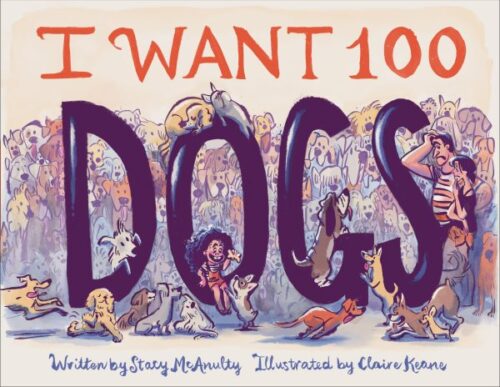
Confession: I’m kind of a sucker for Claire Keane’s art. I can’t help it. Lady has range! Just look at her 2023 output alone! Between this and Make Way: The Story of Robert Mccloskey, Nancy Schön, and Some Very Famous Ducklings (which I also loved and which you’ll be seeing on a future list) she’s been busy this year. Here she’s paired with the very funny and adept Stacy McAnulty who is no stranger to math-related content in her books for kids. Her middle grade novel The Miscalculations of Lightning Girl was a winner of a Mathical Book Prize and that’s no small thing. Here a girl informs her parents that she wants 100 dogs. They keep talking her out of those high numbers, so each time she counters by saying she’ll want ten less. Essentially, this is a book about counting down by tens, but within a legitimately fun framework. There’s a fantastic twist at the end, meaning that book completely sticks the landing. I was hugely impressed with the writing (and any book that stars a girl with a significant gap between her teeth makes ME happy as well!).
M is for Math by Krystina K. Leganza, ill. Lauren Staser
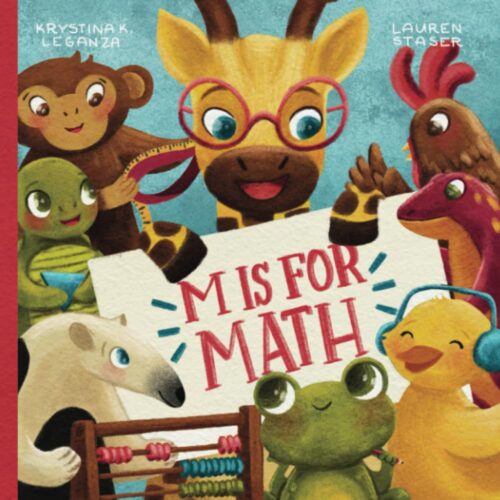
It’s an alphabet book and a math book all tied up together. But does it work? Surprisingly, it kind of does. So you might have “The chicken calculated the circumference of the circle,” on the left hand page and “The duck danced along the diameter of the disc,” on the other. You won’t get a clear cut sense of the circumference from its image, but you WILL from that image of the duckie boogieing along the diameter. All told, what the book does best is establish a certain level of comfort with different types of math terms. Naturally there’s a Note to parents and teachers at the end as well as a whole glossary of terms for those of us that don’t know our Klein Bottles from our xy-planes. I’m rather fond of this. Bets of all, I think kids might actually get a number of these concepts. And the cute duckies and frogs don’t hurt.
One Brown Bear: The World of Numbers by Anne-Marie Labrecque, and Mélissa Coallier, ill. Mathieu Dionne St-Arneault
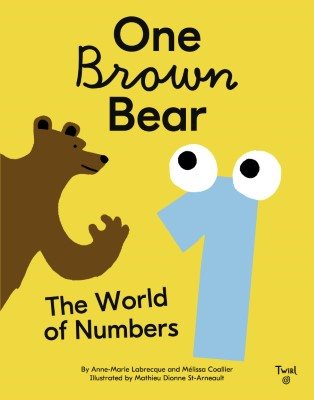
Though it loses some points for not saying who, precisely, did the translation on this French import, I’m intrigued by its mathier qualities. At first the book resembles a board book but a quick opening of the cover shows that the pages, while sturdy and reinforced, are relatively thin. There are some helpful math definitions at the beginning that are probably for parents more than anything else, and then we’re off! Now what I really enjoyed about this book was how it constantly reinforced the different ways to think about numbers. So, on the first page, you see a bear. The text reads, “One brown bear sprays perfume in his hair.” And as those instructions you skipped at the beginning of the book explained, each number is presented in five ways: “in digital, with fingers, with dice, and in lowercase and cursive letters.” The book counts up to twenty and thank goodness we’ve the art of Mathieu Dionne St-Arneault to accompany it all. Truly, if the illustrations had not been delightful, this could come across as a slog. Instead, it’s colorful and fun. At the end is a chart that counts all the way up to 100. I know that a lot of adults are intimidated by math. Here, it’s gracefully presented, and in such a fun educational way. Definitely not one to miss.
One Chicken Nugget by Tadgh Bentley
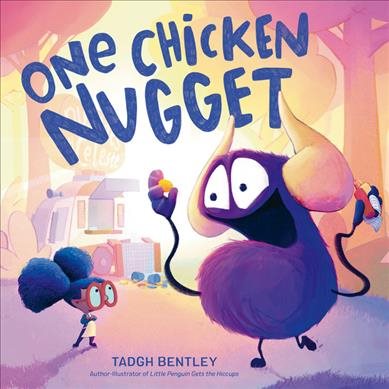
You have to respect any author who looks at Demi’s One Grain of Rice and thinks to themselves, “That’s pretty good, but what if you filled it with chicken nuggets and hungry monsters instead?” Thus is born a legitimately hilarious and downright bizarre math-friendly tale. On the front endpapers (which are filled with fantastic equations) there’s this clever little mention of “The Legend of Sissa ibn Dahir” which is one of the earliest variations of this tale. The story itself is all about exponential growth (as is explained in the magnificently helpful Author’s Note in the back) and gluttony. In it, a monster by the name of Frank has a single scintillating passion: chicken nuggets. Particularly, the nuggets produced by Celeste and her food truck. Trouble is, Celeste is not as enamored of Frank. Monsters aren’t great on the whole payment idea, and Frank has a tendency to eat Celeste’s stock entirely. So she goes to the library, reads up on marketing, math, and folklore (a super combo) and has a Double or Nothing Nugget Eating Challenge (which sounds like a TikTok challenge as well). It’s simple. If for 30 days you can eat double the nuggets you at the day before, and do it for 30 days, you’ll get nuggets for life. This is basically Mr. Beast: The Picture Book. Frank is sure he can handle it, since it seems so simple at the start, but he has no idea how many nuggets are in his future. It’s a hoot, and Bentley’s art perfectly complements the storytelling. Put this one in your yes pile (just be prepared to get hungry for chicken nuggets along the way).
100 Mighty Dragons All Named Broccoli by David LaRochelle, ill. Lian Cho
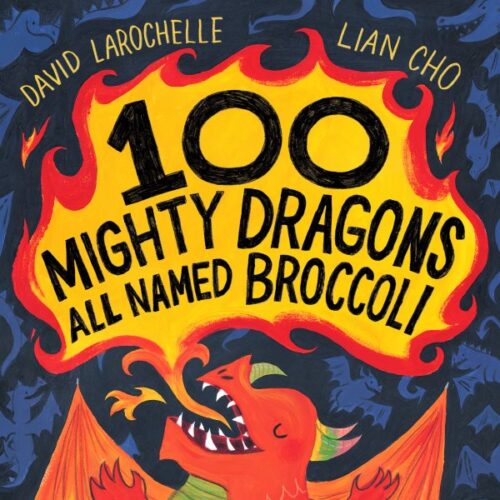
I wonder what thoughts crossed Lian Cho’s mind when first she was handed this manuscript. Perhaps she wondered, “Do I really have to draw 100 different dragons for this book?” (she did). Or maybe thought, “Will I actually have to keep track of the dragons and make sure that I can tell one from another, and remember who they are, as I make the book?” (she did and quite well too). Now at first I thought that perhaps there weren’t 100 dragons at the beginning of the book. Then I realized that if you put the first three pages together, there really and truly are. But though this is a counting down book (sorta) LaRochelle is playing by his own peculiar set of rules. As he sees it, You could go from 100 to 50, 50 to 40, 40 to . . . 38? There isn’t any consistency that I can figure with the amounts by which the dragons decrease or (and this was a surprise) increase momentarily again at the story’s end. I do know that if you do the math, it works out. Plus, Cho gets to have loads of fun drawing dragons in places like South Dakota, West Virginia, or with the Green Bay Packers. But best of all? The man nails the ending on this one. It has a killer finish that I won’t ruin for you. A numbers book that shows how playful numerals can really and truly be.
10 Cats by Emily Gravett
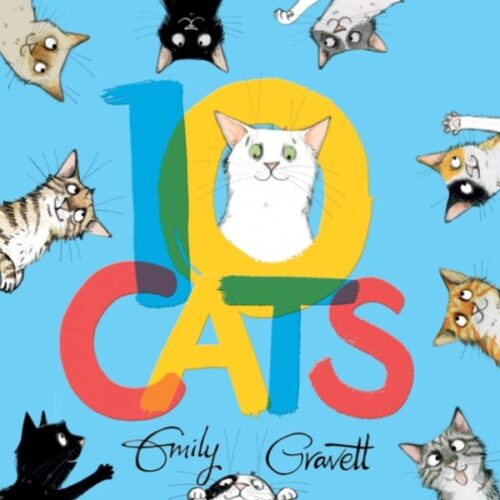
Nine kittens and mama cat get into a mess of feline trouble with colorful results. This is just your average counting/color mixing/pattern recognition/seek-and-find book filled to the brim with adorable kits. Now 2023 was a pretty heavy year in terms of serious, meaningful content. But when making my lists, I need to balance some of that sobriety out with lighter and younger fare. Enter, Emily Gravett. I like cats but I don’t just fawn over every cat picture book I see. This one, however, is exceedingly simple but is doing several things at once. It’s a counting book, a seek-and-find, and a color mixing title all at once. There’s also a bit of pattern recognition (which math aficionados love to see in picture books). I think I can honestly say it’s one of the better counting books I’ve seen in a long time. Simple but doing a bunch of different things at once and doing them exceedingly well. Making a book like this is harder than it looks!
10 Dogs by Emily Gravett
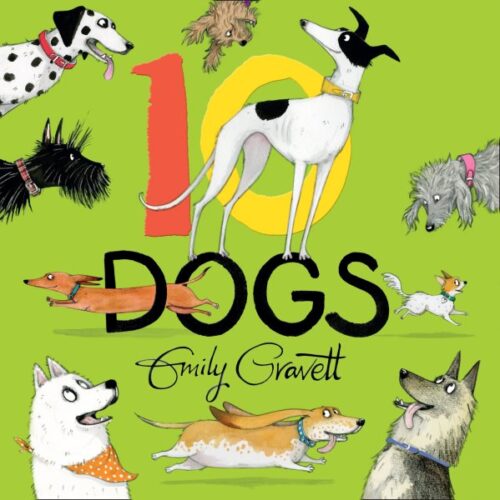
ADVERTISEMENT
ADVERTISEMENT
Yeah yeah yeah, it’s the same book as 10 Cats, except this time with dogs . . . sorta. My personal opinion is that 10 Cats is technically the superior title. That book had (as I mentioned) counting, seek-and-find, color mixing, and pattern recognition. But really, it seems fitting that the cat book would be just a bit more sophisticated than the dog one. This one may not be attempting to wow you with its cleverness but its heart is in the right place. In our very first scene we see ten dogs and, on a table behind them, ten linked sausages. What follows is a doggie free-for-all where those sausages pass all around and yet mysteriously never get eaten until the very end. What’s kind of neat about this book is that the sausages always number ten but in different combinations. So you might have two on one page and eight on the other in one two-page spread, and then five and five on the other. As for the dogs themselves, it doesn’t take a genius to notice that Gravett is clearly a fan of them. Who’s a good book? You are! You are!
Too Small Tola Gets Tough by Atinuke, ill. Onyinye Iwu
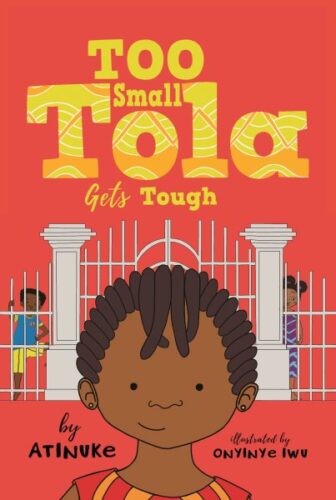
Our only chapter book title on today’s list! When the pandemic hits Lagos, Nigeria, Tola finds herself working as a housegirl for the super rich, to help her family. And when her love of numbers comes in handy, she proves that even if you’re small you can still save the day. I couldn’t resist. I try to avoid sequels as a rule on my lists but every Too Small Tola title in the series stands entirely on its own and this one is SUCH a good one! In it, the pandemic hits Lagos and hits it hard. I can’t think of a single children’s book that’s ever explored what kids had to deal with during lockdown in other countries. Plus you know my fondness for math titles and this book is positively brimming with it! I didn’t find it particularly farfetched to believe that Tola could be the one to save the day here. And as with all of Atinuke’s books, there is a lot here that adults will understand that’s above and beyond what kids will. An absolute winner (and funny to boot).
You Rule! by Rilla Alexander
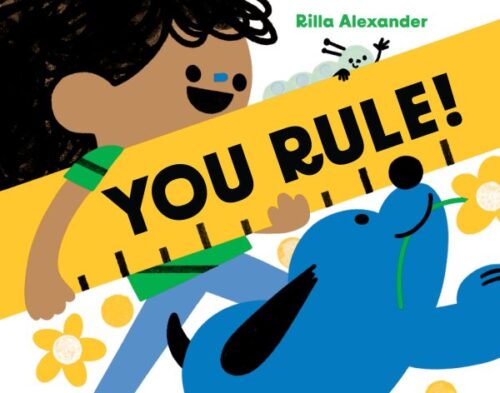
How do you measure the immeasurable? How do you quantify the unquantifiable? Rilla Alexander takes a big swing with her latest book, attempting to (in the words on the bookflap) “think about time and love and what it might be like if there was a ruler for ideas and feelings.” The end result is a complicated book unafraid to present spectrum after spectrum after spectrum. These ranges are then incorporated into the art, which keeps it from feeling quite so much like an infographic brought to life and more (thanks in large part to the visual storytelling) like a tale for kids. So why am I putting it in the math category? One thing I learned from my time on the Mathical Prize committee is that instilling a love of math doesn’t mean making kids count or look at shapes all the time. It’s important to show how math is infused in every aspect of life, and what better way to do that then show multiple ranges of multiple things in a single day of a kid’s life? A cool concept rendered… uh… coolly.
Yumbo Gumbo by Keila V. Dawson, ill. Katie Crumpton
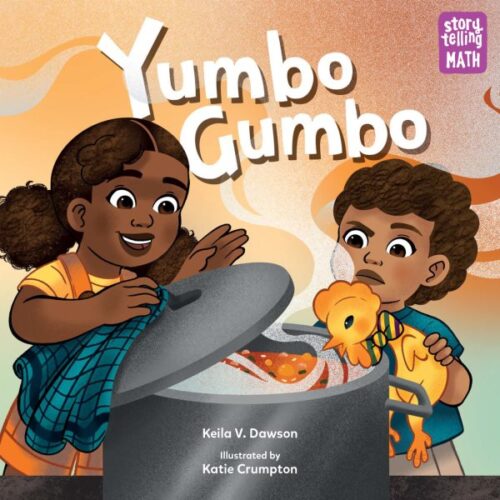
Warning: Do not read on an empty stomach. The “Storytelling Math” series from Charlesbridge is one of the very few from a major publisher to actually focus primarily and exclusively on math. But what makes the series so good is that they cover so much more than counting and subtracting. They delve into pattern recognition, and size comparison and, in this particular case, voting, data, and problem solving. It’s actually one of the cleverer books on the subject I’ve seen, and that’s entirely apart from all the delicious gumbo on its pages. In this story Annabelle is learning to cook gumbo but she wants to make it with okra. Her brother (who, to my mind anyway, is correct) thinks okra is too slimy and wants chicken gumbo. When Annabelle takes a vote from her family, she finds it’s three to three. The introduction of seafood gumbo sounds like the solution, except that then the vote becomes two to two to two. The solution? Annabelle has everyone vote on their least favorite. And when that happens, the vote is split in a good way between chicken and okra. Seafood wins! Backmatter delves into the history of gumbo itself, a glossary of some of the Louisiana Creole terms that pepper the text, info on the math and even a “Try This” section care of Dr. Yvelyne Germain-McCarthy (a Consultant and Professor Emerita of Mathematics Education) on voting with your own family. I never really thought of voting as a math related activity, but this book has definitely convinced me otherwise.
Hope you enjoyed these! Here are the lists you can expect for the rest of this month:
December 1 – Great Board Books
December 2 – Picture Book Readaloud
December 3 – Simple Picture Book Texts
December 4 – Transcendent Holiday Picture Books
December 5 – Rhyming Picture Books
December 6 – Funny Picture Books
December 7 – CaldeNotts
December 8 – Picture Book Reprints
December 9 – Math Books for Kids
December 10 – Gross Books
December 11 – Books with a Message
December 12 – Fabulous Photography
December 13 – Translated Picture Books
December 14 – Fairy Tales / Folktales / Religious Tales
December 15 – Wordless Picture Books
December 16 – Poetry Books
December 17 – Unconventional Children’s Books
December 18 – Easy Books & Early Chapter Books
December 19 – Older Funny Books
December 20 – Science Fiction Books
December 21 – Fantasy Books
December 22 – Comics & Graphic Novels
December 23 – Informational Fiction
December 24 – American History
December 25 – Science & Nature Books
December 26 – Unique Biographies
December 27 – Nonfiction Picture Books
December 28 – Nonfiction Books for Older Readers
December 29 – Audiobooks for Kids
December 30 – Middle Grade Novels
December 31 – Picture Books
Filed under: 31 Days 31 Lists, Best Books, Best Books of 2023
About Betsy Bird
Betsy Bird is currently the Collection Development Manager of the Evanston Public Library system and a former Materials Specialist for New York Public Library. She has served on Newbery, written for Horn Book, and has done other lovely little things that she'd love to tell you about but that she's sure you'd find more interesting to hear of in person. Her opinions are her own and do not reflect those of EPL, SLJ, or any of the other acronyms you might be able to name. Follow her on Twitter: @fuseeight.
ADVERTISEMENT
ADVERTISEMENT
SLJ Blog Network
Should I make it holographic? Let’s make it holographic: a JUST ONE WAVE preorder gift for you
Halfway There: A Graphic Memoir of Self Discovery | Review
Fifteen early Mock Newbery 2026 Contenders
When Book Bans are a Form of Discrimination, What is the Path to Justice?
Take Five: April 2025 Middle Grade Books
ADVERTISEMENT








Of course my favorite list! But there was one I hadn’t even heard of! Awesome work, Betsy!
Did I miss the list for Spanish or bilingual books? There are so many great ones!
No, you didn’t. I hadn’t kept proper track of them this year, but I think I’ll have to bring them back next year instead. You’re right! So many good ones abounded in 2023!!
I am one who loves math but am also aware that the word “fear” is so often associated with that subject for many people. I don’t believe I have ever heard the word “fear” connected to learning to read. Difficult for some, yes, but never something to be afraid of.
I remember a time as a third grader when adding several numbers being uncertain “which number you put down and which number you carry” which indicates I had no understanding of the underlying concept. My years as an elementary teacher involved a real change in teaching methods as understanding became the focus rather than rote memorization of rules. However, I have always believed something like the memorization of multiplication facts is ESSENTIAL in order to progress in higher skills.
I feel “fear” about things I do not understand. Thank goodness there are books such as the ones you have shared with us today that present math concepts in various ways. This increase the chances a student will comprehend a given concept.